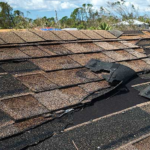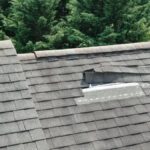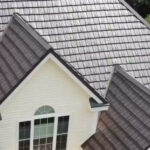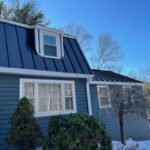Metal Roof Valleys
ISSUE
While attractive and functional, the high profile formation of most metal roof panels requires careful consideration when designing valley systems.
ANALYSIS
The valley systems used for metal roofing need to accommodate the high profile of the panels. In some cases, attempts have been made to do this by simply receiving the metal roof panels into a “C” or “J” channel where they intersect the valley. The downfall to this is that, wherever the metal panel has “low spots”, large voids are left where the panels enter the receiving channel. These voids will eventually become clogged with debris such as tree leaves, pine needles, ice and snow. The amount of time it takes for this to happen depends upon the location of the installation and whether nearby trees are present. However, once the channels clog, the water which runs into the valley from uphill roof sections can no longer exit the roof and, instead, becomes “trapped”. At that point, it will end up running beneath the metal roofing and it will find its way into the structure at some point.
SOLUTION
The only solution to this problem is to use an “open” or “self-cleaning” valley system that carries all water and debris on top of the valley and not inside of hidden channels or waterways that will clog over time. This requires carefully cutting and folding the metal panels so that they actually interlock with the valley pan instead of just inserting them into a receiving channel. Although this requires precise and exacting installation techniques, it is the only available solution to this problem. (Note that some very low profile vertically seamed products, such as those used for agricultural applications, can be successfully installed on top of a wide metal valley pan and do not require jobsite folding of the metal.)




